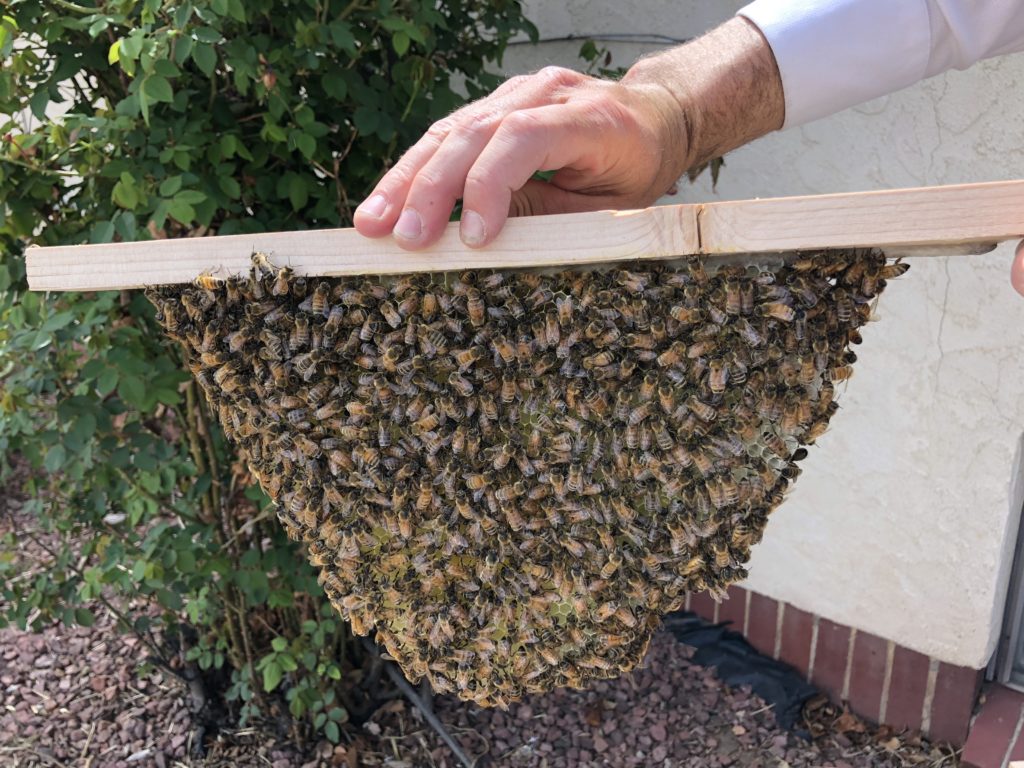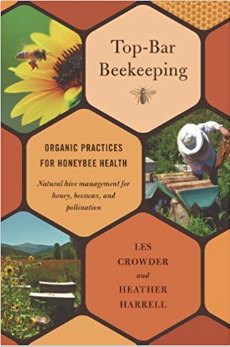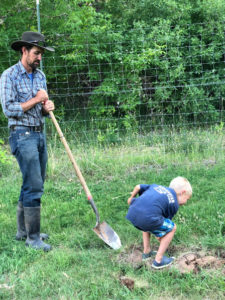Bees? Don't they sting?
If you’re following us on social media, you already know what some of the buzz is about…we’ve got bees! Friends and family haven’t so much asked questions about the bees, it’s more of raising their eyebrows and saying “that doesn’t sound very safe, especially with the kids and all.” So, the bees warrant an explanation. And, even for those of you keeping bees yourselves, explaining our management strategy speaks to the values and principles guiding our farming practices.
As a kid I learned two things about bees, they are to be feared and they make honey. As a parent, it’s interesting to see those two lessons pass on to the next generation. It was nostalgic to hear my two year old come home from preschool singing, “I’m bringing home a baby bumble bee,” because I distinctly remember my oldest sister singing it when I was little kid. But, when she got to “ouch it stung me,” I stopped her and said, “hey, do we like bees?” She gave the same response I would have as a kid, “no, we smash bees.”
I don’t remember being stung by a bee until late in my teens, and even then it was a wasp, not a bee. Still, as a child I viewed it as my mission to hunt the bees. We lived on the edge of town with endless fields of sagebrush and wild clover just across the street. I would play in the field and hunt anything that moved…ants, crickets, horny toads, and bumble bees. The clover would be covered in bumble bees, and I would run around with a flyswatter taking out as many as I could.
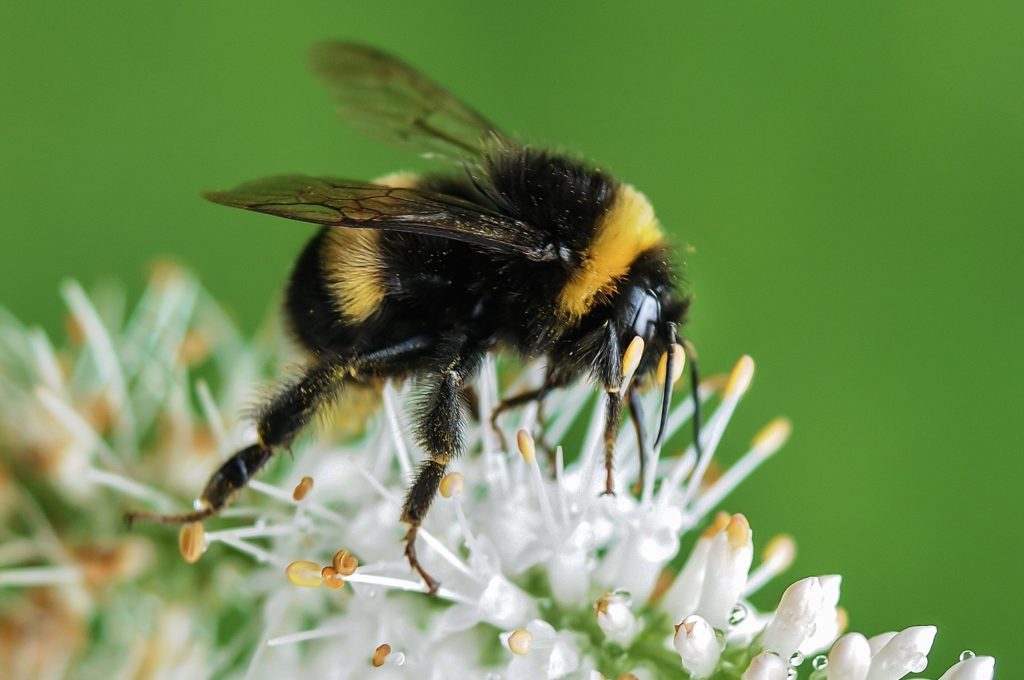
Bee awareness
Even in adulthood, I had little appreciation for bees. As a cyclist, my priority was keeping bees from getting in my jersey in the spring and early summer when they were most active. Nothing spoiled a race faster than being stung on the back in the first mile. So, I was intrigued six-or-so years ago when one of our neighbors mentioned keeping bees in her backyard.
The idea of raising animals, even tiny ones, intrigued me, and as we’ve shared in other posts, this was during a time in life when we were becoming increasingly conscientious about where our food was coming from and how it was being produced. It was also a time when Colony Collapse Disorder (CCD) was making its way into the mainstream media, with everyone from CNN to late night television taking an interest in the value and wellbeing of honey bees.
So, I was ready to go. I went searching for a beekeeper starter kit and researched where I could get bees. I came to two harsh realities. First, beekeeper starter kits are expensive. And, second, you can’t get bees in August. Emily wisely pointed out we had just purchased our first backyard chickens, and she thought it would be better for us to figure out one species before adding another. I slowed my roll a little, and agreed, maybe the bees should wait…”for now.”

Why buy what you can build?
That time in waiting turned out to be a blessing. While I wanted bees, I really had no idea what was needed or how to care for them. Initially, I was discouraged by the seemingly endless list of supplies needed. Even more discouraging was the price of each item. Our local feed store has a beekeeping section and one day as I walked through oohing and ahhing at all of the beekeeping gadgets, I did a little math. I estimated it would cost us nearly $500 to get all of the essentials. Two or more bee suits, smoker, smoker fuel, hive base, hive boxes, entrance reducer, queen excluder, honey supers, gloves, honey extractor…oh wait, hive tool, bee brush, the list goes on. Sure we could spread the expense over time (i.e. we don’t need an extractor right away, but it only makes sense to buy one eventually), but the expense of it all still left a bad taste in my mouth.
You see, I’m a do it yourself kind of person. I’m not an especially skilled DIYer, but I try, and I always take more pride in something I built myself over something I paid someone else to build. I said to Emily one day, “these beehives aren’t all that complex, I bet I could find a way to build one.” Likely looking out the window at the outcome of some of my less-than-stellar projects, she said, “I think it’s probably worth just buying the stuff, at least to start.” I’m blessed to have a wife who can be simultaneously supportive and realistic.
But, I’m stubborn, and waiting a few months gave me an opportunity to check out some books from the library. I got talking about bees so much some friends even gifted me a 1955 original copy of Edward Lloyd Sechrist’s Amateur Beekeeping. I’m not sure whether it is a classic or not, but it was an entertaining read. Sechrist provides a great background on the development of the Langstroth Hive, even highlighting that in 1953 “the latest thing in hives is the aluminum one.”
In the end, I came away from most of my reading with the clear instruction to “purchase your hive equipment,” because in order to prevent problems and make it possible to harvest the most honey possible, the box, frames, entrances, and foundations needed to be perfectly designed. But again, I’m stubborn, so I went to the source of infinite information (and misinformation)…YouTube.
"Scrap-wood beekeeping"
A simple search for “how to build a beehive” generated “about 394,000 results.” Plenty to keep me occupied until spring. I quickly started sifting through videos, immediately skipping any that involved professional carpenters. I had a hand saw, circular saw and jig saw. Anything involving “notches” or “rails” was just not going to happen. Before long, I found myself repeatedly stumbling into videos on “top bar hives.” I refined my library search and came home with a slew of new beekeeping books, including Les Crowder and Heather Harrell’s Top-Bar Beekeeping.
I was sold. Before getting past the first 20 pages of the book I was in the shed pulling out scrap pieces of wood and drawing up a top bar hive design based on the supplies I had. I probably should have read a little more before jumping in, because there’s a few things I would have done differently in the design, but before I knew it, I had a beehive…in November. Anyone who knows anything about bees knows an empty beehive in November is just that…an empty beehive. I still had several months before I could actually do anything with it.
So, I spent the time watching YouTube videos and learning what I needed to do to actually get bees in the hive. There is an incredible spectrum of beekeepers on YouTube. I saw people with giddy excitement as they picked up their first package of bees. I watched people nearly catch their hive on fire because they smoked it so aggressively. Some people literally waged war on their bees. And another actually took joy in being stung thinking it was just the bees “getting to know me” (remember that misinformation disclaimer from earlier?).
In the end, there were two beekeepers on YouTube who stood out to me. The aforementioned Les Crowder and Jen Rasmussen from Paradise Nectar in Hawaii. A few things stood out to me in Les’ and Jen’s instructional videos. First, they respect their bees. There is no “us vs. them” mentality in their management of the hives. Their intent is not to optimize output or control behavior, it is simply to create a natural space for the bees to live and then to share with the bees in the fruits of their labor. Second, Les and Jen both describe beekeeping as an “intuitive” practice.
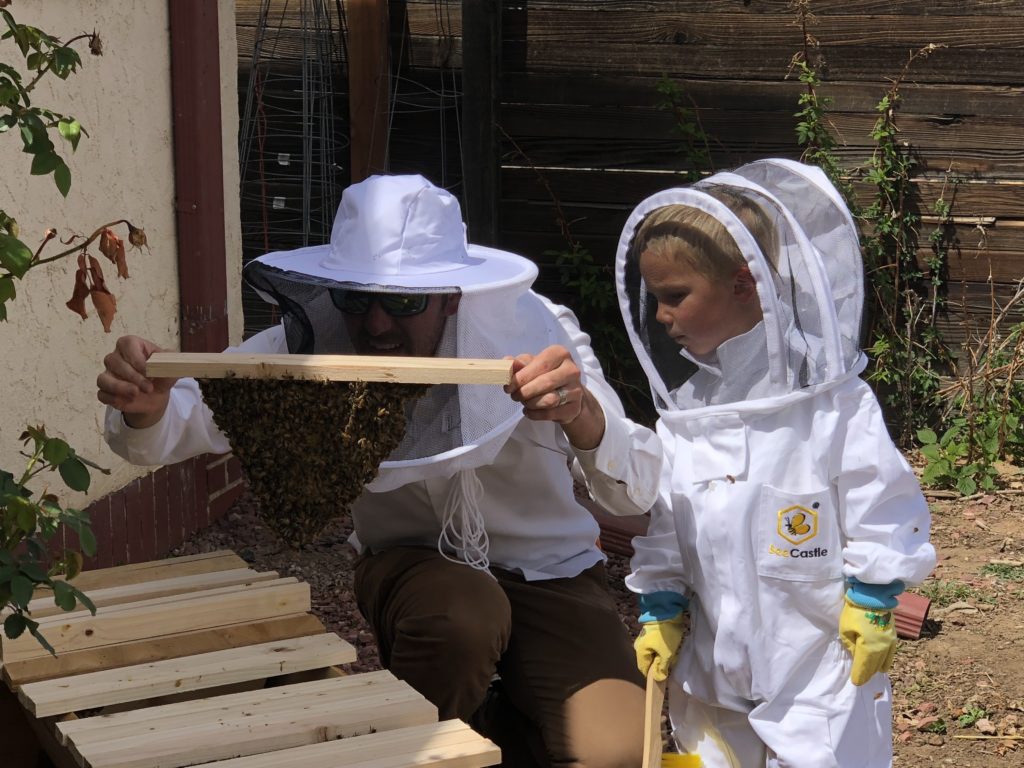
I digress...
The idea of an intuitive practice resonates with me. I’m not a great rule follower. I like to challenge “best practices” and I rarely give a clear yes/no answer. This used to drive trainees crazy when I worked as a paramedic field training officer. So often, people want to be told how to do something just to pass a test. Life isn’t about passing tests. It’s about developing and sharing intuition. A monkey can be taught to go through the motions of even highly sophisticated processes, but they don’t have the critical thinking ability to adapt or improve their processes. You have to develop intuition. Whether you’re a farmer, doctor, technician, mechanic, lawyer, or leader, the difference between someone going through the motions and someone achieving meaningful impact is the ability to apply intuition.
Okay, off my soapbox and back to the bees. I want to be an intuitive beekeeper, so I thought I would start off in the most natural way possible, by either luring or catching a swarm. I put a few drops of lemongrass oil in my hive and crossed my fingers. But, let’s be honest, you don’t develop intuition through happenstance. Likewise, luring or catching a swarm takes work, and work takes time, and for the past two years, I had very little of the latter.
So, the hive sat empty…until Emily got involved. You see, Emily has this ability to recognize what needs to be done now in order to make something happen in the future. It’s called planning…and it’s not one of my greatest strengths. So, in the middle of winter as we developed the conviction to move onto the farm, Emily said, “if you want bees, we need to get them ordered now.” We’ve connected with a few local beekeepers, and, while their go-to line when we mention we have a top bar hive is “you’re on your own with that one,” they introduced us to some of the best local apiaries. After a little research we decided to order from Apis Hives, a great little operation out of Palisade, Colorado. We wanted to ensure our bees are acclimatized to the Rocky Mountains and we feel better supporting a small in-state company over the giant bee suppliers in the south.

Acts of patience
And that brings us to the past two weeks. Our three pound package of bees arrived a week and a half ago on a wintry spring day. The cold and wet weather was a worst case scenario for our bee-delivery day. I wrestled with the pros and cons of leaving the bees in the package for a few more days vs putting them in the hive with more days of cold weather forecasted. I knew from what I’d read I could get recommendations either way, so I sighed and said to myself, “I guess we’ll just have to use our intuition on this one.” I thought about the fact there is no worse place to be than in limbo, so I resolved to move the bees as soon as the rain stopped for a few minutes.
I’m committed to allowing the kids to be involved in as much of the farming activities as possible. So, even on a cool and rainy afternoon, I encouraged our oldest to suit up and stay close as I transferred the bees from their box to the hive. Because he’s always up for an adventure, my good friend Francis joined us to take some pictures. Our son stood calmly by and held a few tools as I wiggled the queen cage free and then nearly lost the queen as I tried replacing a cork with a marshmallow (yes, the queen does want out of that cage!). We talked a lot about staying calm around the bees in the days leading up to their arrival, and I probably should have directed some of that talk to myself as the kiddo did better keeping his body calm than either Francis or I.
Next came the hardest part of all…waiting. We had patches of rain and then another snowstorm over the next few days, and I wanted nothing more than to get in and see how many bees had survived. The morning after the snowstorm I sat outside for an inordinate amount of time waiting for the first signs of life, and I gave a subtle pat on my own back when the first foragers started wandering out.
After two days of sunshine, I briefly snuck in to inspect for queen release. I nervously snatched out the queen cage and fought back the panic instinct as several bees buzzed around my hand. I perseverated on that experience over the next few days like I perseverated over holding hands with a girl for the first time in junior high. I wish I wouldn’t have been so awkward. I should have just moved slower…etc. Much like all relationships, beekeeping is more about controlling your own emotions and actions than controlling the bees.
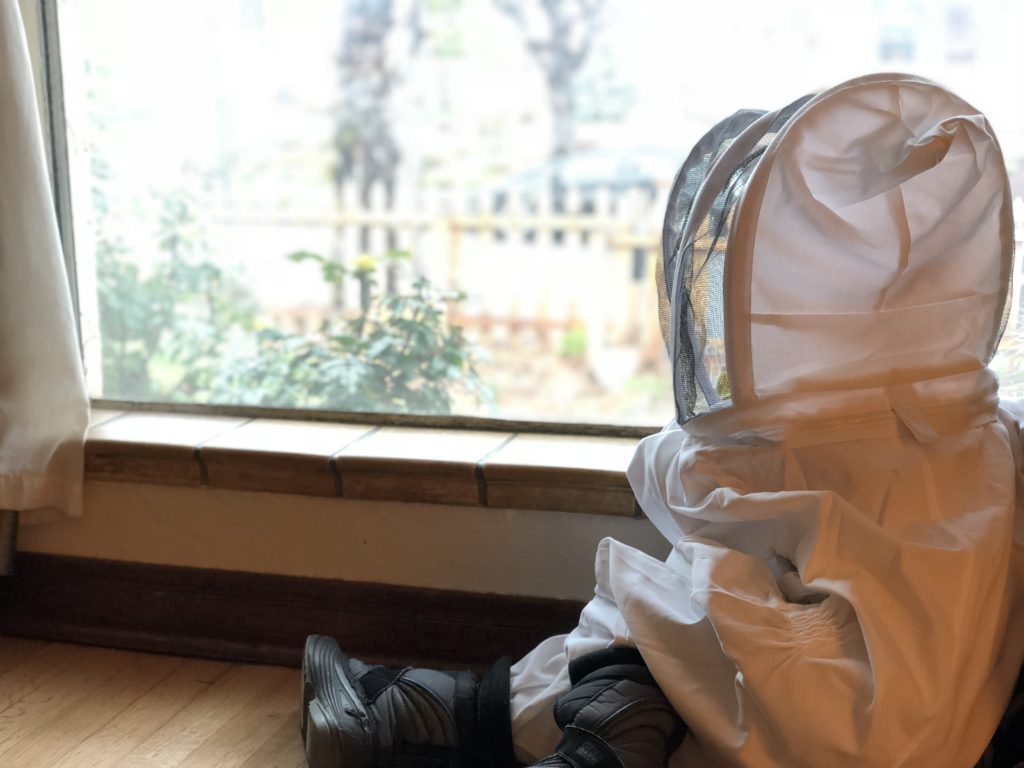
Developing intuition
As we headed into the weekend I planned out our first hive inspection. After watching a few Les Crowder videos to focus myself, I made a plan for how we were going to go about the process. I would start with a small puff of smoke and then move quickly, but methodically through each bar. Here’s a few of the things I learned.
- The colony is alive! Even with absolutely miserable weather for the first 4 days in their new home, the bees survived and have started settling into the hive.
- I still know nothing. I saw comb. I think I saw some honey. Looking at some pictures after the fact, I think I even saw some eggs. But, I definitely do not yet have a refined eye. I couldn’t come close to finding the queen, and aside from recognizing the fact that they were drawing comb along the top bars, I couldn’t tell you much more about what was going on in the hive.
- Hive inspections don’t need to be a battle. As I described above, I don’t want beekeeping to be an “us vs. them” affair. With patience, deep breathing, and a clear plan I was able to steadily work through the hive without any sign of agitation from the bees. Could be beginner’s luck…but I’ll take it!
Now, that’s not to say everything is rosy. There’s a few things I wish I would have done differently in the design and establishment of the hive. But, these are the lessons life brings. This is how intuition develops. So, I’ll take the lessons and trudge on to the next challenge. Which in the case of the bees, is figuring out how I can safely transport them a few hundred miles to the farm…wish me luck! And, tune back in to hear how it goes.
